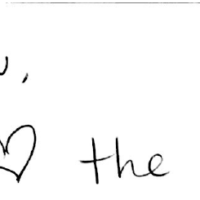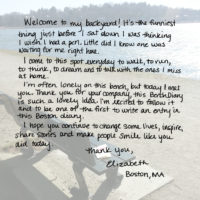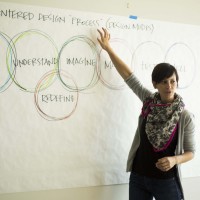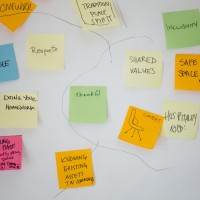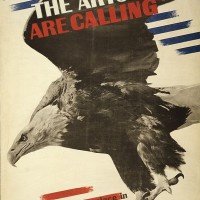This Arts Advocacy Day, the stakes are much higher. As we work to make the case for the arts, we wonder, is our data keeping pace? We're using love (or breakup) letters as a creative and fun design research method to get powerful insight into the perceptions of our stakeholders. We invite you to join us in this discovery. Nina Simon is Executive Director of the Museum of Art & History (MAH) in Santa Cruz, CA and the author of The Participatory Museum and The Art of Relevance. Nina designs and researches participatory museum experiences. … [Read more...]
I know you won’t judge me
This Arts Advocacy Day, the stakes are much higher. As we work to make the case for the arts, we wonder, is our data keeping pace? We're using love (or breakup) letters as a creative and fun design research method to get powerful insight into the perceptions of our stakeholders. We invite you to join us in this discovery. Rev. Erik Martinez Resly is an artist, community organizer, and ordained Unitarian Universalist minister living in Washington, DC. Erik is the founder of The Sanctuaries, one of the first interfaith arts communities in the … [Read more...]
You’re the best
This Arts Advocacy Day, the stakes are much higher. As we work to make the case for the arts, we wonder, is our data keeping pace? We're using love (or breakup) letters as a creative and fun design research method to get powerful insight into the perceptions of our stakeholders. We invite you to join us in this discovery. Anne Katz is the Executive Director of Arts Wisconsin, an organization that serves as the voice for the arts throughout the state. Arts Wisconsin believes that everyone, everywhere in Wisconsin should have the opportunity to … [Read more...]
I am still feeling the same glow
This Arts Advocacy Day, the stakes are much higher. As we work to make the case for the arts, we wonder, is our data keeping pace? We're using love (or breakup) letters as a creative and fun design research method to get powerful insight into the perceptions of our stakeholders. We invite you to join us in this discovery. Laura Ritchie is Co-founder of The Carrack, a zero-commission gallery and performance venue in Durham, North Carolina. The Carrack provides professional space at no cost to artists and fosters connections between artists and … [Read more...]
Dear, Bench Diary
This Arts Advocacy Day, the stakes are much higher. As we work to make the case for the arts, we wonder, is our data keeping pace? We're using love (or breakup) letters as a creative and fun design research method to get powerful insight into the perceptions of our stakeholders. We invite you to join us in this discovery. Dessa Lohrey is the Founder of Bench Diary, an experiment-turned global storytelling project. A diary is tied to a bench for one day and invites those who happen upon it to write an anonymous entry. Dessa has collaborators in … [Read more...]
A Design Thinking Frame of Mind
When you’re watching things go down in flames or they've just collapsed in front of you, it can be hard to keep a broad perspective and focus on moving forward productively. This article by Miriam Persley at Leadership Learning Community (which references Beth Kanter from our post yesterday as inspiration) provides a twist on a design thinking framework to give us a practical list for working through failure, in a healthy way: Gain Empathy: Reflect Gain Empathy: Dig Deeper Reframe: Infer Insights Reframe: Set A … [Read more...]
Designing Your Life
This week on Field Notes, we're talking about career paths. We've broken this conversation down into five steps. We'll dive into a different step each day this week. Today, we're focusing on the importance (or lack there of) in having or thinking about a career path. Executive Director of the Design Program at Stanford University, Bill Burnett shares his thoughts on one of the toughest questions we all face in life: "What do you want to be when you grow up?" Burnett believes that “the notion that you need to have a passion and follow it is a … [Read more...]
Extreme Users: Look Outside the Everyday Audience Member
We’re talking about advocacy for the arts over the next few days. Specifically, what's our value... not only to our loyal patrons but also to those with whom we may not have engaged yet. In the human centered design world, that's called sampling extreme users. It's an incredibly valuable practice that helps us better understand our community and our customers. Professor of Management at the Ross School of Business at the University of Michigan, Jeffrey Sanchez-Burks discusses how looking at both extremes – those who participate every day and … [Read more...]
Design Thinking Isn’t a Miracle Cure, but Here’s How It Helps
With that helpful and perhaps needed disclaimer out of the way, writer/designer/consultant Helen Waters pens a lengthy and thought-provoking dissection of what design thinking isn't, what it can't do, clues to why it has been at times oversold...and why it is still well worth considering the real value it provides. And why designers may have long since learned to walk in the opposite direction when some folk use the word. … [Read more...]
How the Magazine Industry Can Save Itself
This is an interesting piece from FastCompany about the challenges of content providers, which I think has important implications for arts organizations. "In the internet age, distribution isn't a competitive advantage. But highly curated content can be. " How the Magazine Industry Can Save Itself | Co.Design. … [Read more...]
Mapping Business Models
This post introduces an interesting, knowledge-game approach to understanding and developing an organization's strategic direction. It includes a mapping tool and suggestions for how to create a team session which can be focused in any number of ways - "at the very least the game leads to a refined and shared understanding of an organization’s business model. At its best it helps players develop strategic directions for the future by outlining new and/or improved business models for the organization." We've used similar mapping tools for … [Read more...]
Design Thinking for Social Innovation | Stanford Social Innovation Review
Although the article focuses on the use of design thinking for tackling systemic social problems, it highlights many ideas that could help any organization become more innovative and responsive to their customer and environment, including: - background on design thinking - strategies for identifying community needs - suggestions for more innovative idea generation Design Thinking for Social Innovation | Stanford Social Innovation Review. … [Read more...]




